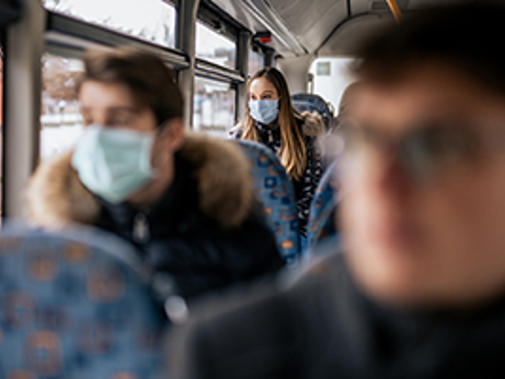That is the message from the BMA – with doctors leaders warning the public does not know what coverings to wear or when they should be worn.
It comes after mixed messaging from the Government, particularly around whether the public should wear face coverings in takeaway food shops.
Official Government communications have also used images of people wearing inappropriate masks with valves, while some businesses, including hairdressers, are being advised to use visors or face shields in the place of an effective face covering.
Equipment clarity
The BMA has demanded the Government emphasises the primary purpose of wearing a face covering is to prevent droplets leaving the mouth or nose of someone who may be carrying and therefore potentially transmitting the virus to others, but who has no or minimal symptoms. Using this logic, face coverings are not a protective strategy for the individual, but one for the population as a whole.
BMA public health medicine committee chair Peter English said: ‘Everyone has their part to play in preventing the spread of this deadly virus, but people can only be expected to behave appropriately if they’ve been given clear, consistent guidance. So far, this has been lacking.
‘First, we were told they were mandatory on public transport, but nowhere else. Then, shops but not other workplaces – and not for another week. And now, there is confusion around whether a takeaway is a shop or a restaurant – despite the fact that the virus is equally as infectious in either setting.
‘Meanwhile, the Government advises using ineffective visors, and its own ministers are pictured wearing inappropriate masks or no coverings at all.’
Doctors’ advice
Guidance from the BMA says:
- For the general public a cotton mask, covering the nose, mouth and chin, is suitable. This can then be washed and reused. Ideally these should be three layers thick and of tightly woven fabric
- Masks with exhalation valves should not be used, as they allow potentially infected air to be channelled out through the valve and are thus less effective
- Visors are likely to offer much less protection against viral transmission from the wearer to others and should not be worn in place of an effective face covering
- People who are clinically extremely vulnerable should consider wearing a fluid-resistant surgical mask, as these are likely to offer greater protection to the wearer
- The public should not wear medical grade respirators – these should be reserved for frontline healthcare workers.
Safe not sorry
The association has said face coverings should be mandatory in all scenarios where two-metre physical distancing cannot be maintained between people from different households or ‘bubbles’, and there are not other mitigating measures in place, such as plastic screens.
However, without such mandatory measures, the BMA urges the public to wear face coverings in these situations, and for businesses to encourage this.
Dr English added: ‘The BMA is clear that face coverings should be worn in all situations where physical distancing is not possible, and the Government should equally be pressing this point home. Instead they are dragging their feet with sporadic and illogical policy announcements.
‘The public needs clear, consistent measures, backed up with simple, easy-to-follow instructions. Without these, the virus will continue to spread, and we risk losing many, many more lives as a result.’

